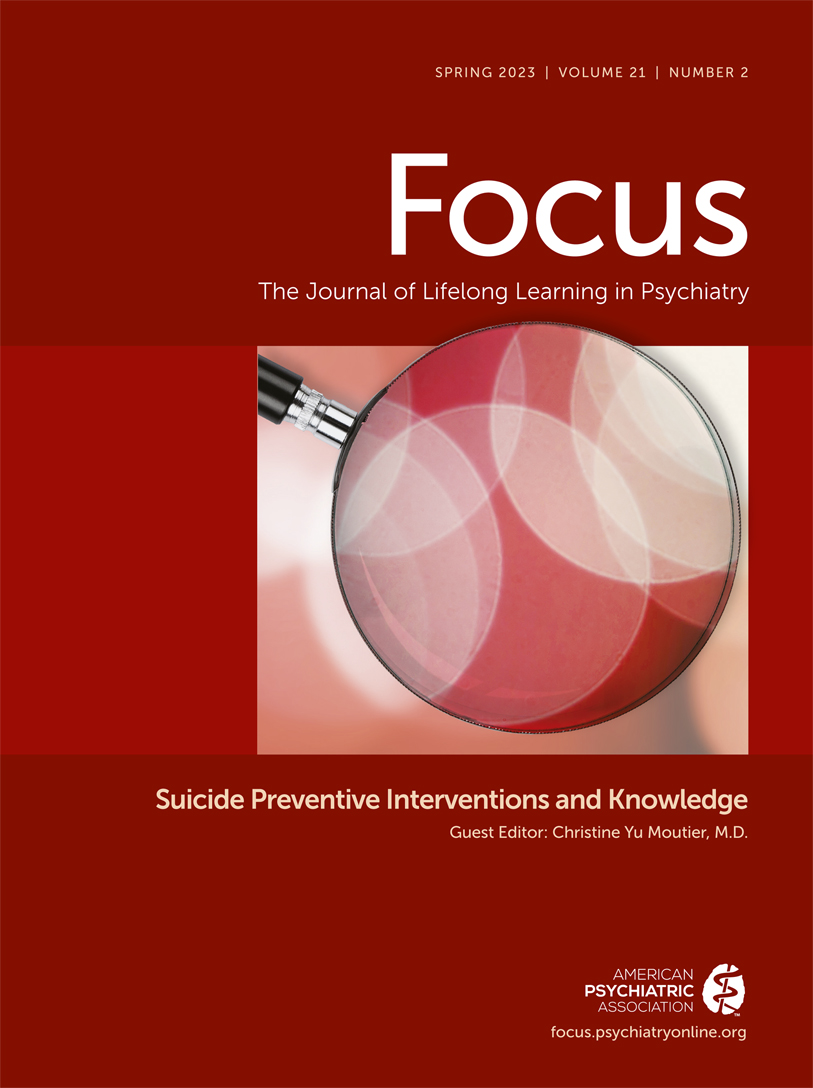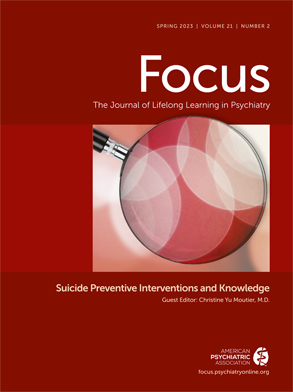Screening and Assessing Suicide Risk in Medical Settings: Feasible Strategies for Early Detection
Abstract
Benefits of Screening
Overcoming Barriers to Screening
Can Universal Screening Help Bridge Health Equity?
Screening Versus Assessment
Suicide Risk Screening Pathways
Tier 1: Brief Screening for Suicide Risk
Is Depression Screening Sufficient to Identify People at Risk for Suicide?
Selecting Patients to Screen
How to Screen
Managing Positive Screens
A Note on Managing Patients With Past Attempts
Tier 2: Brief Suicide Safety Assessment (BSSA)
Tier 3: Disposition
Imminent Risk or Acute Positive Screens
Moderate Risk or Further Evaluation Needed
Mild Risk
Conclusions
References
Information & Authors
Information
Published In
History
Keywords
Authors
Competing Interests
Funding Information
Metrics & Citations
Metrics
Citations
Export Citations
If you have the appropriate software installed, you can download article citation data to the citation manager of your choice. Simply select your manager software from the list below and click Download.
For more information or tips please see 'Downloading to a citation manager' in the Help menu.
View Options
View options
PDF/EPUB
View PDF/EPUBLogin options
Already a subscriber? Access your subscription through your login credentials or your institution for full access to this article.
Personal login Institutional Login Open Athens loginNot a subscriber?
PsychiatryOnline subscription options offer access to the DSM-5-TR® library, books, journals, CME, and patient resources. This all-in-one virtual library provides psychiatrists and mental health professionals with key resources for diagnosis, treatment, research, and professional development.
Need more help? PsychiatryOnline Customer Service may be reached by emailing PsychiatryOnline@psych.org or by calling 800-368-5777 (in the U.S.) or 703-907-7322 (outside the U.S.).

